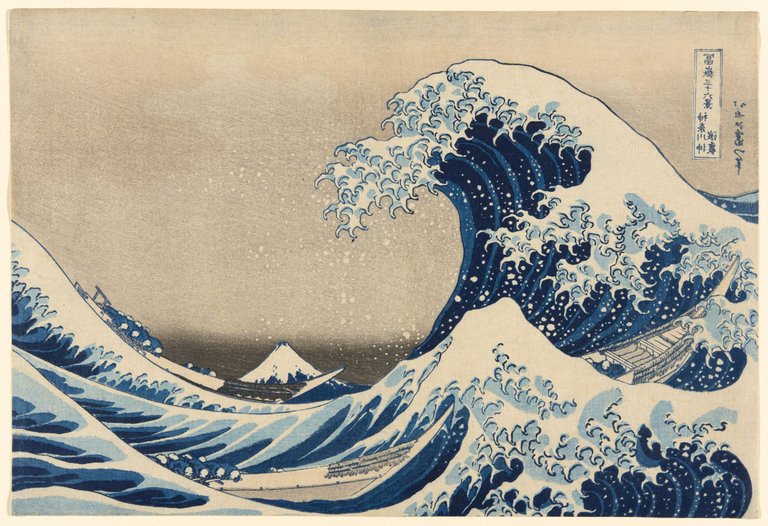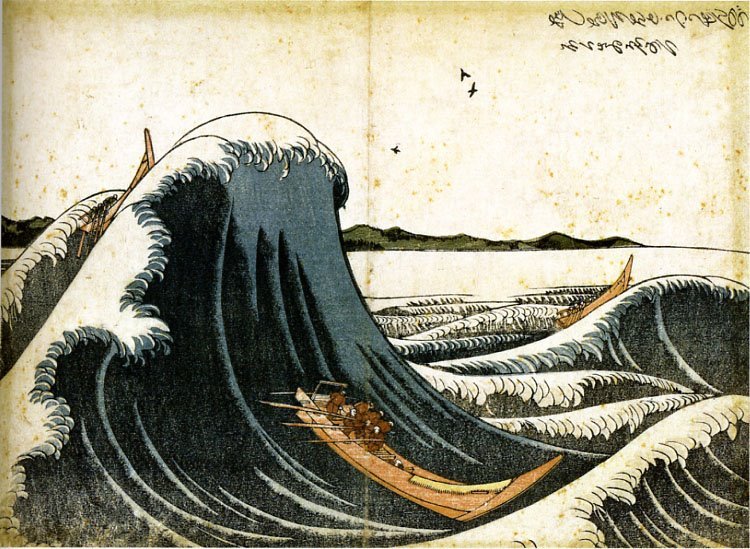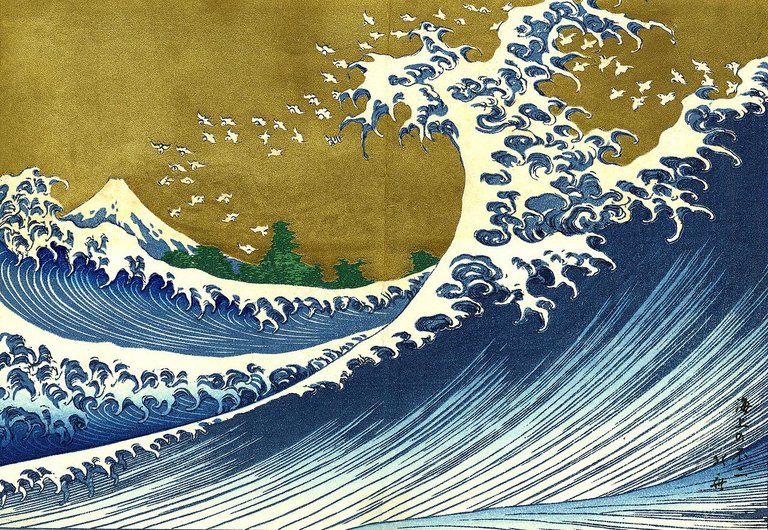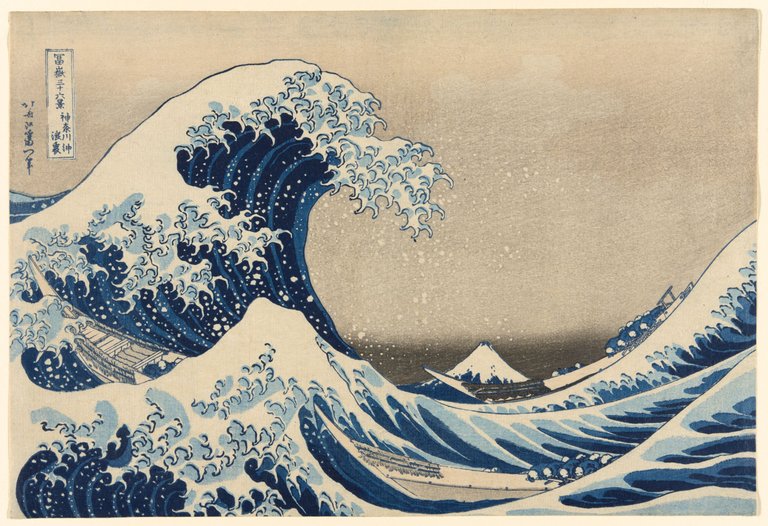Reading the Great Wave Differently
In my last post yesterday, I looked at Hokusai’s Great Wave off Kanagawa in broad strokes: its history, technique, and meaning. Today, let’s take a step deeper into how this iconic print might have been experienced in Edo Japan[1] compared to how we see it today.
Reading Order and Perception
One subtle but significant difference comes from reading conventions. Today, Japanese is read both left to right (for horizontal text) and right to left (for vertical text). But in Hokusai’s time, reading flowed exclusively right to left. This cultural habit shaped not just text but also how visual art was scanned.
When we look at the Great Wave, our eyes naturally move from left to right, striking the wave crest first. Only afterward do we notice the tiny, fragile boats and the helpless fishermen. The emphasis is on the overwhelming force of nature—the mountain of water about to crush everything beneath it.
But Edo viewers likely approached it in reverse. Their eyes would have entered the scene from the right, taking in first the open sea, then the fragile boats, and only afterward the towering wave. That shift completely alters the drama: what for us is a sudden ambush of water, for them was a building tension, a slow realization that the wave is about to overtake the boats. The narrative changes from shock to inevitability.
To those viewers of the time, it would have looked more like this:

A Lifetime of Waves
Another layer comes from Hokusai’s long engagement with the theme. The wave wasn’t new for him. He had experimented with rough seas and storm scenes throughout his career, producing earlier prints that toyed with similar imagery. Yet none carried the sheer impact of the Great Wave.
In many ways, this print feels like the culmination of his lifelong pursuit. The energy is distilled, refined—like a master draftsman finally nailing the gesture he had been circling around for decades. It’s not just a wave, but the wave: the archetype of chaos, captured at its most dramatic moment.



Cultural and Material Forces
We can also look at the Great Wave in the context of its time. Hokusai used Prussian blue, a synthetic pigment newly imported from Europe. Its depth and durability gave the wave a vibrancy earlier Japanese prints couldn’t match. Combined with hints of Western perspective (another foreign influence), the work embodies a moment when Japan was both closed to the outside world yet subtly absorbing elements from beyond its borders.
At the same time, the subject matter spoke directly to the Edo commoner’s experience. These were fishing boats¥ — ordinary laborers pitted against the sea. Unlike aristocratic art, ukiyo-e wasn’t designed for elites. It was printed cheaply, sold in stalls, and meant for the working class. The print’s popularity lay in its resonance with everyday life, even as it elevated that life into the sublime.
The Final Draft
Seen together, these elements suggest that the Great Wave wasn’t just one print among many. It was the final draft of an idea Hokusai had chased his entire life. The movement of the eye, the fusion of old and new techniques, the balance of human struggle and natural grandeur — all converge in this single image.
And that’s perhaps why the wave still crashes through time. It wasn’t an accident of composition, but the distillation of decades of experimentation, cultural change, and personal vision.


If the first post asked why this image became famous, this one asks how it works, and how differently it might have worked for those who saw it fresh in Edo Japan. For us, it’s shock and awe. For them, inevitability and fate. Either way, the wave never stops moving.
-
The Edo era was 1603–1868. Hokusai’s Great Wave was released in 1831, towards the end of the Edo era. ↩
❦
 |
David is an American teacher and translator lost in Japan, trying to capture the beauty of this country one photo at a time and searching for the perfect haiku. He blogs here and at laspina.org. Write him on Bluesky. |
!LADY !PIZZA !LOLZ !ALIVE
You have already used the number of tips you had for the day. Please try again tomorrow or buy more LOH tokens to send more tips.
lolztoken.com
The corner—they’re usually 90 degrees.
Credit: reddit
@dbooster, I sent you an $LOLZ on behalf of geneeverett
(7/10)
Farm LOLZ tokens when you Delegate Hive or Hive Tokens.
Click to delegate: 10 - 20 - 50 - 100 HP
$PIZZA slices delivered:
@geneeverett(9/15) tipped @dbooster
Come get MOONed!